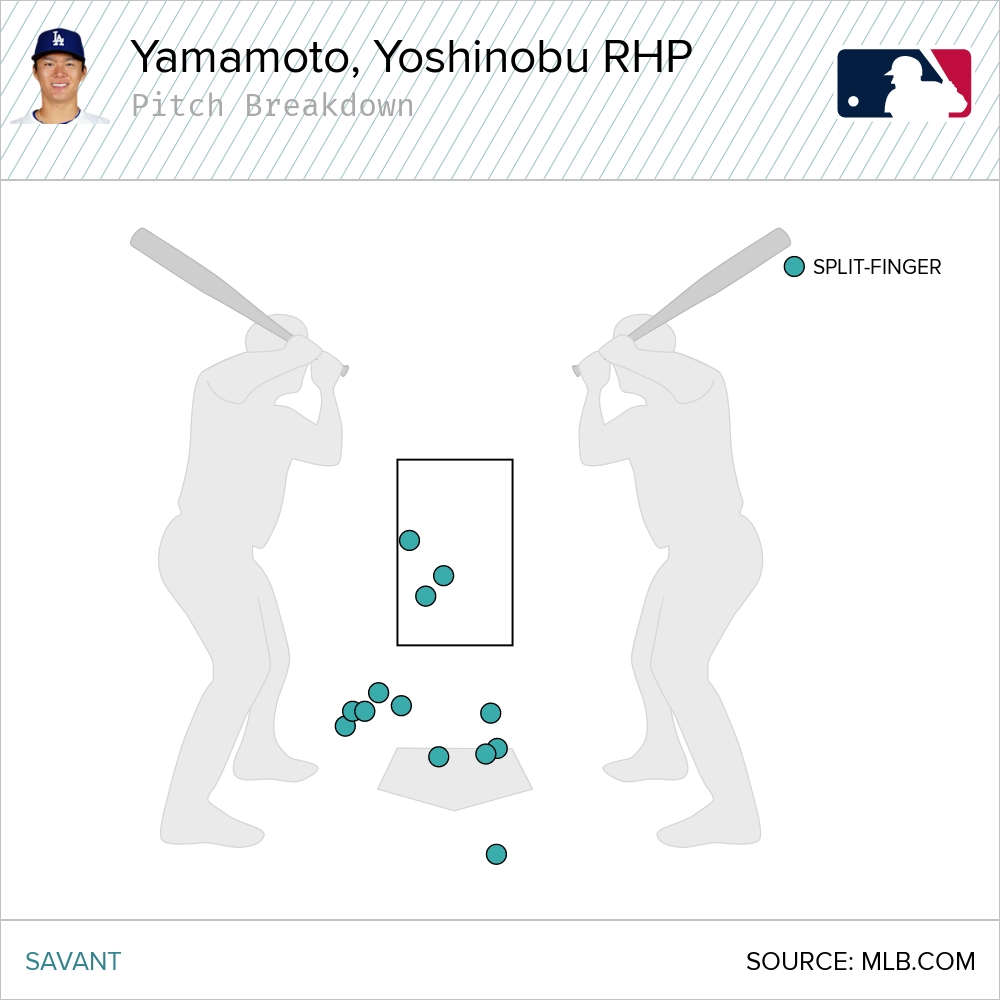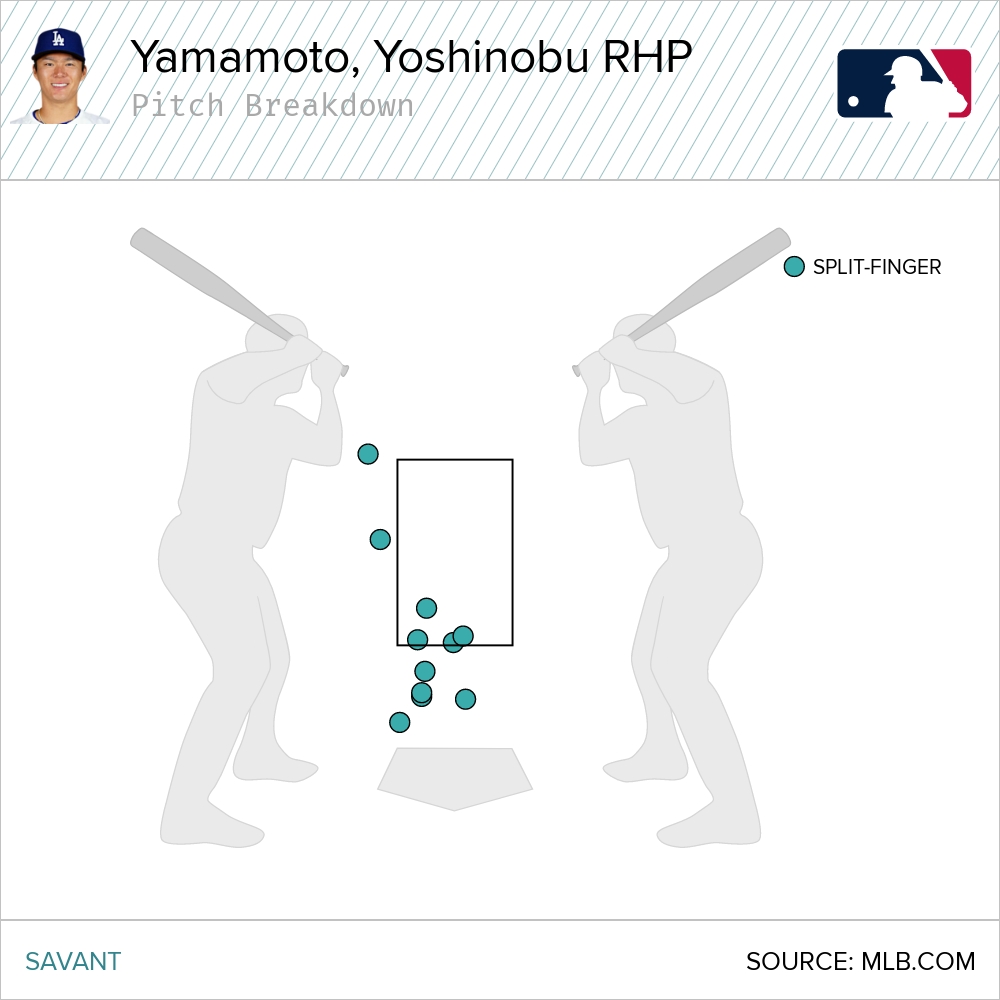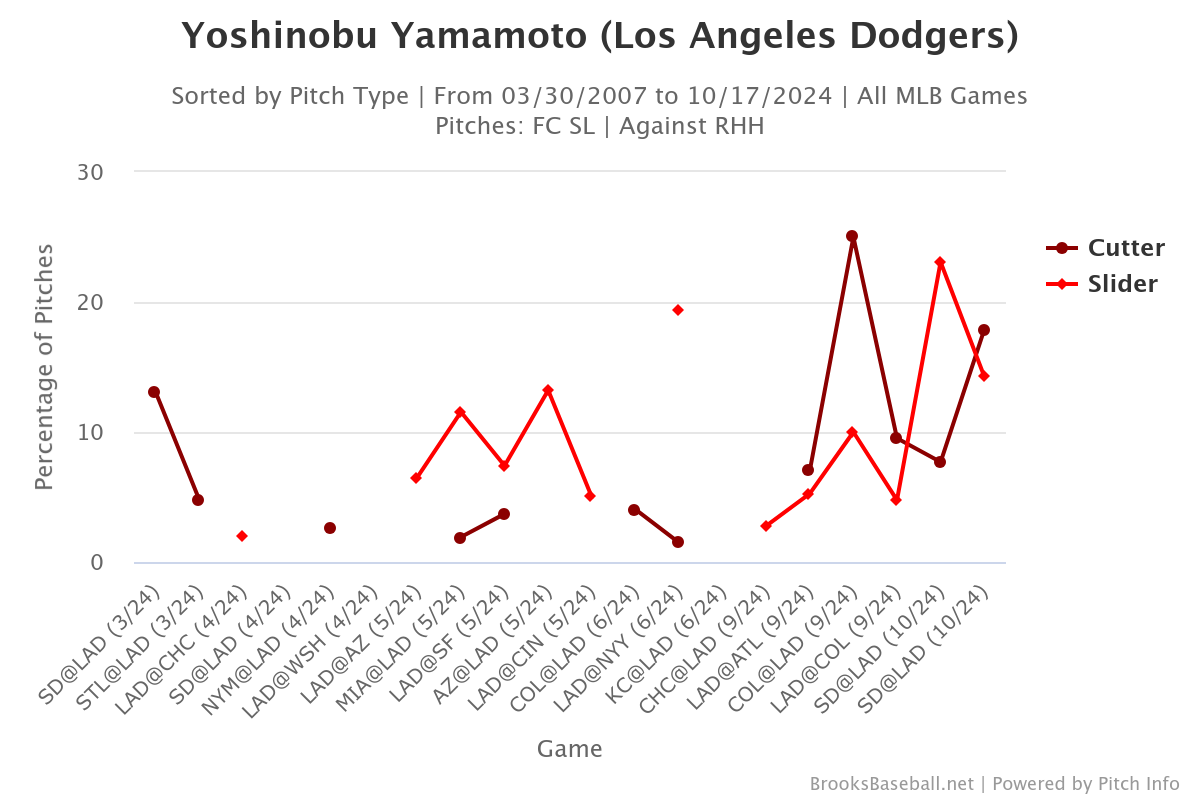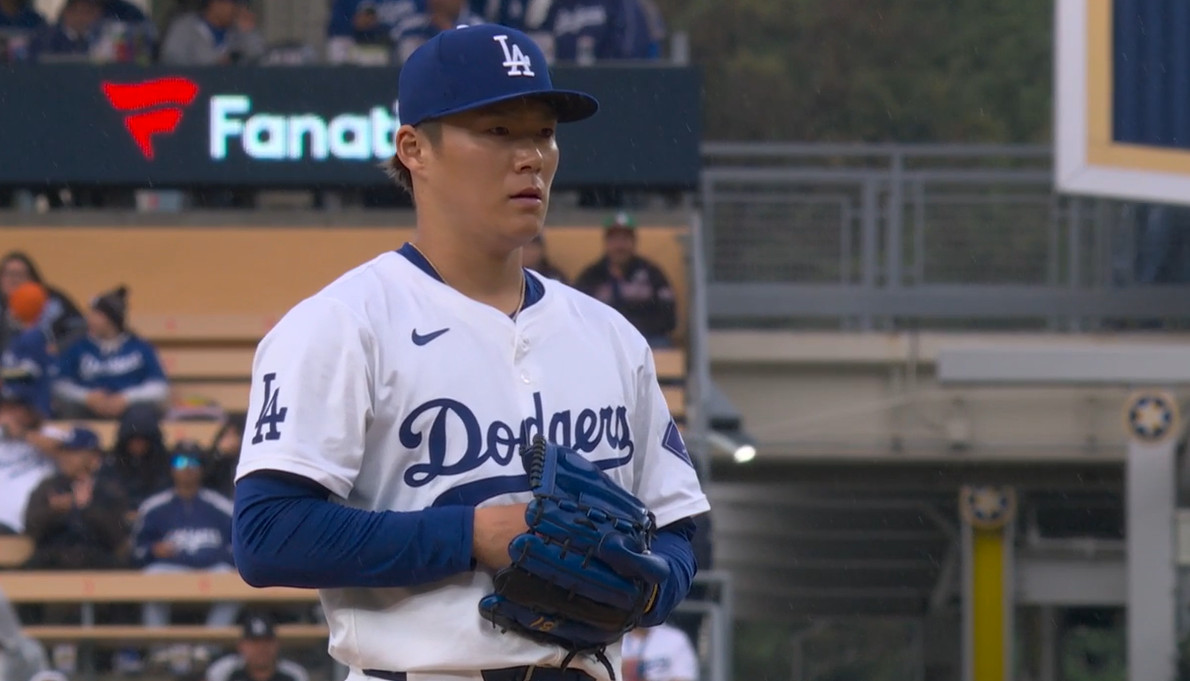Yoshinobu Yamamoto’s adjustment between his disastrous first playoff start against the Padres and his good NLDS Game 5 start is why the Dodgers are currently two wins away from securing their first pennant in four years. While the deeper numbers in that second start were not great (two strikeouts, four swings and misses), Yamamoto was able to limit the damage on balls on play, which is how his first start spiraled out of control. On the night of a quiet offensive performance at the hands of Yu Darvish, he kept the Dodgers competitive.
After the Game 1 start, the Dodgers mentioned that they thought Yamamoto was tipping pitches. This was previously cited as a concern after his season debut against the same Padres team. In attempting to prepare this post, I looked at Yamamoto’s mechanics out of the stretch and did find some minor differences.
Yamamoto with runners on base. Image 1 is game 1, image 2 is today. Looks like a minor adjustment in where the glove is when he's set, closer to his body pic.twitter.com/MFSecOg0ua
— Daniel Brim (@DanielBrim) October 12, 2024
Yamamoto did not pitch much out of the stretch in his Game 5 start, but he was holding the ball closer to his chest. In his previous bout with pitch tipping, it was cited that Yamamoto might be revealing his grip to runners on base, and the new set position might help with that somewhat. Additionally, in his game one start, Yamamoto’s hand position tended to drift away from his chest the longer he remained set with runners on base:
hello I am posting this video on twitter for reasons which will become apparent in 30-60 minutes pic.twitter.com/YsMG0piBxN
— Daniel Brim (@DanielBrim) October 17, 2024
After Yamamoto’s outing in game one, Dave Roberts mentioned concerns about revealing pitches to runners on second, and holding the glove closer and eliminating glove drift may have been intended to help with that. Yamamoto did not throw many pitches from the stretch in Game 5, but his glove did not seem to exhibit the same behavior.
While there’s a chicken and egg effect, perhaps the bigger factor in Yamamoto’s poor Game 1 performance was the location of his main out pitch, the splitter. Here is where his splitters were located against the Padres in that first outing:

These are largely not competitive pitches. An inability to throw the ball close to the low end of the zone simply did not tempt the Padres batters, who only swung at four of them.
Here is Yamamoto’s splitters were located in Game 5:

Not only were most splitters closer to the bottom of the zone, they were more in the middle of the plate, giving the appearance of a center-cut fastball before falling out of the zone. Yamamoto’s splitter in Game 5 only generated one swing and miss, but the three splitters put into play resulted in routine groundouts.
——
While the splitter is and will likely remain Yamamoto’s most important out pitch tonight, the Mets’ right-handed-heavy lineup will test one of his other recent adjustments. Starting in the middle of the season, Yamamoto began phasing in two other pitches he threw in Japan: his slider and his cutter. In particular, he started throwing these pitches more frequently to right-handed batters, which was very apparent against the Padres:

Yamamoto’s slider grades out as his second-best pitch (behind the splitter) by FanGraphs’ Stuff+ and rates extremely well by Baseball Prospectus’ StuffPro as well. It resulted in one of the most memorable pitches of his Game 5 start.
I am also posting this video for reasons which will also become apparent in 30-60 minutes pic.twitter.com/3Khtls98OZ
— Daniel Brim (@DanielBrim) October 17, 2024
Yamamoto phased out the slider in his later seasons in Japan due to the pitch causing discomfort in his elbow, but when he throws it, it’s very good. It’s hard to ignore his famous start at Yankee Stadium being one of the high marks of slider use of the season, as well as the fact that his rotator cuff injury occurred shortly thereafter.
Yamamoto never completely dropped his cutter, but he has changed how it was used. In April, he only threw one cutter against right-handed batters, and in May he only threw three. He threw seven combined in his two starts against the Padres, including five in his last start.
The emergence of these two pitches to right-handed batters has given him a different look, and has also reduced his reliance on his somewhat mediocre four-seam fastball. In Yamamoto’s six starts between March 30th and May 1st, 90% of his pitches against right-handed batters were either four-seam fastballs, splitters, or curves. In both of his playoff starts, that number was in the low-80s. His primary weapons are still there, but now he can break something away from the zone against right-handed hitters.
——
The Mets are a very good-hitting team, but they are more prone to chase than the Padres. Yamamoto is likely hoping that the Met bats will be as trigger-happy as they were against Buehler. This whole season has been a learning process, but it’s hard to not feel good about how prepared Yamamoto looks as this important moment has found him.
 Dodgers Digest Los Angeles Dodgers Baseball Blog
Dodgers Digest Los Angeles Dodgers Baseball Blog
